5 colorful flowers to plant in May for a beautiful summer garden
Expert tips on what to plant
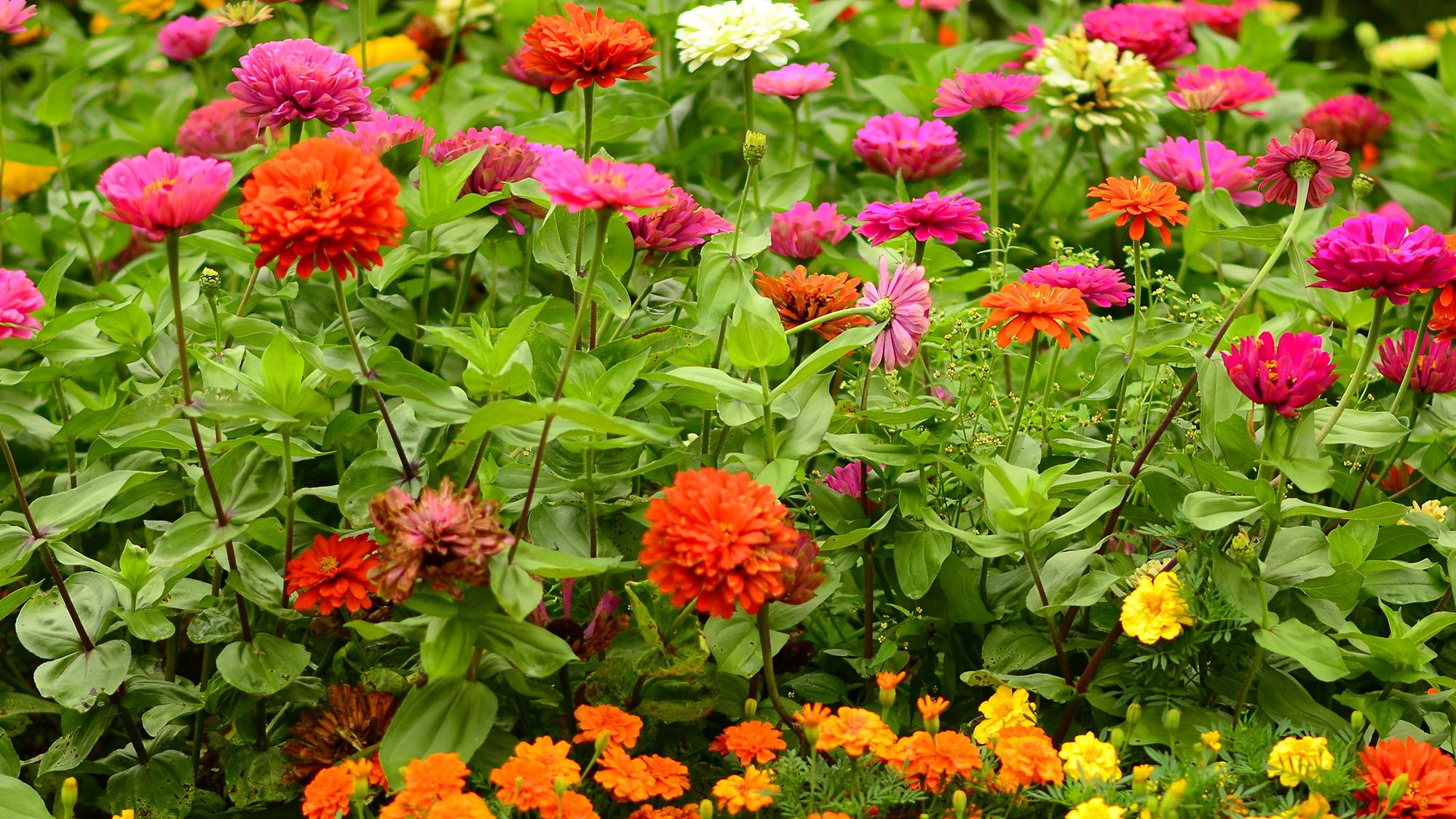
After the shorter days of winter, my spring garden has sprung into life and each morning I venture out to spot what’s emerging from the soil or starting to bloom.
I’m enjoying seeing my majestic Globemaster alliums burst into color, as their purple flowerheads pop against the background of healthy green hydrangea leaves.
The new life and vibrant color boosts my wellbeing and inspires me to get started with gardening jobs in May. And with the warmer climate and sunshine, there’s nothing stopping me from donning my best gardening gloves and getting outside.
With the help of expert gardeners I’ve gathered together five flowers to plant in May for a beautiful summer garden to enjoy.
You might also be interested in 5 vegetable crops to grow in May for a homegrown harvest and I'm a mom who loves gardening— here are 3 gifts I'd like to receive on Mother's Day.
1. Marigolds
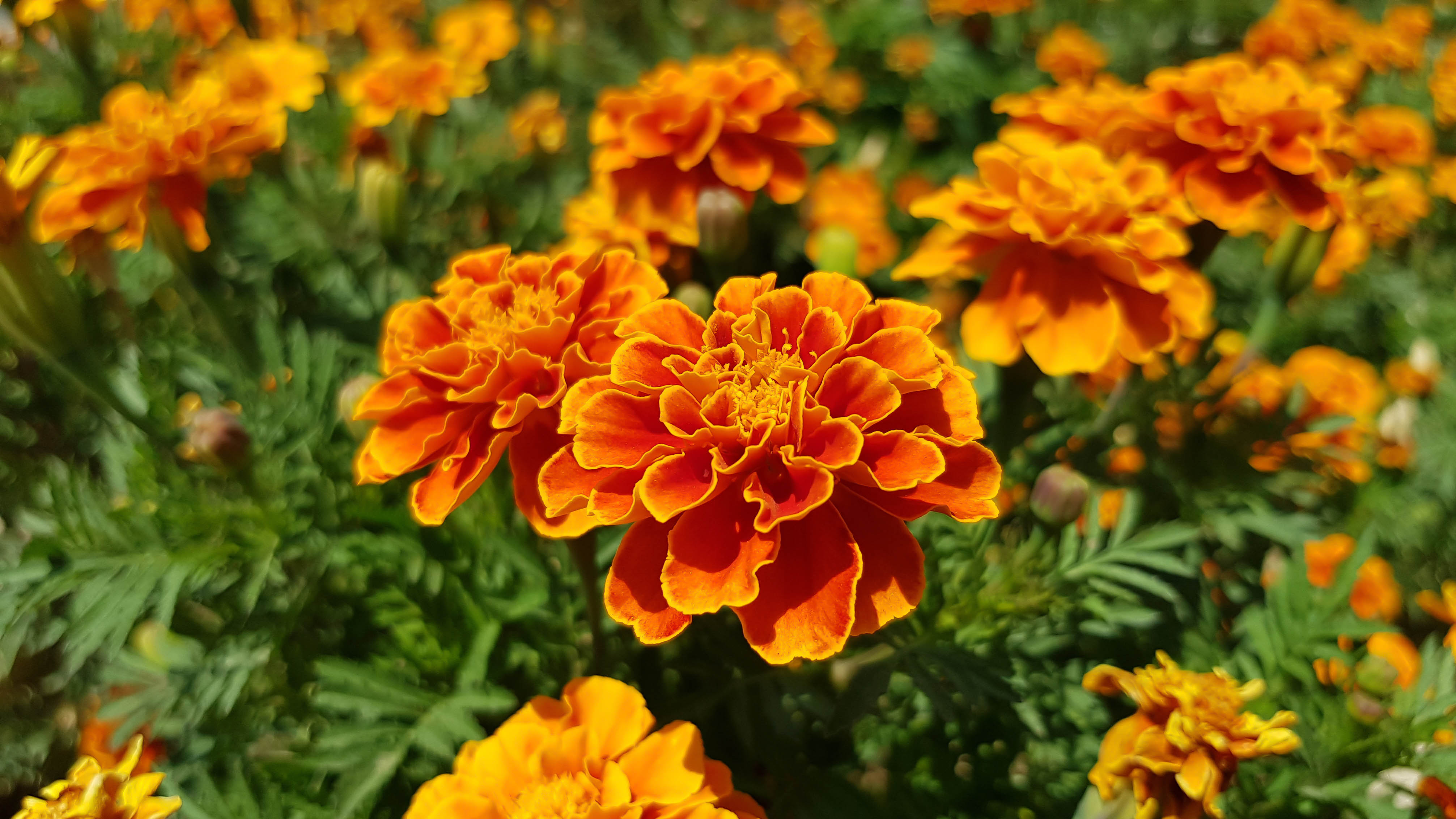
Marigolds hold a lot of nostalgia for me as I remember my grandparents carefully collecting the seeds and planting them year after year. This golden flower is also a top choice among garden experts.
Steve Corcoran, CEO at Lawn Loves, says, “Marigolds are one of my favorite flowers to have around my yard and garden. Not only are they colorful and super easy to care for, but they are one of the best naturally pest-repelling flowers out there.”
It seems like marigolds are a good choice — a multipurpose plant that adds color and works as a companion plant to keep pests away from your edibles.
Get instant access to breaking news, the hottest reviews, great deals and helpful tips.
Andrew White, resident gardening expert at Rhino Greenhouses, says, “They pair wonderfully with tomatoes, because they deter pests such as nematodes and whitefly.”
He also adds that marigolds and tomatoes make a great color combo. “Just around the time your toms are ripening, their splashes of red will look wonderful alongside the rich golds, yellows and oranges of marigolds.”
Planting
Corcoran advises that marigolds thrive in zones 2-11, which makes them an adaptable plant to grow. “They do like full sun, but truthfully aren’t too picky about their soil, although a well-draining soil will help,” he says.
White suggests watering them every 4 days or so, for “marigolds that will bloom throughout the entire season once they are properly established.”
Top tip
Apart from planting directly into the ground, Ward Dilmore, founder and head landscape designer at Petrus - Luxury Estate Landscaping Company recommends planting marigolds in containers, and says they’ll benefit from an organic fertilizer during planting.
These garden gloves are made of nylon and nitrile and come in three sizes — small, medium and large. They offer excellent non-slip properties, are comfortable around the wrist, breathable and machine washable. At Tom's Guide, we recommend them as the best overall gardening glove.
2. Zinnias
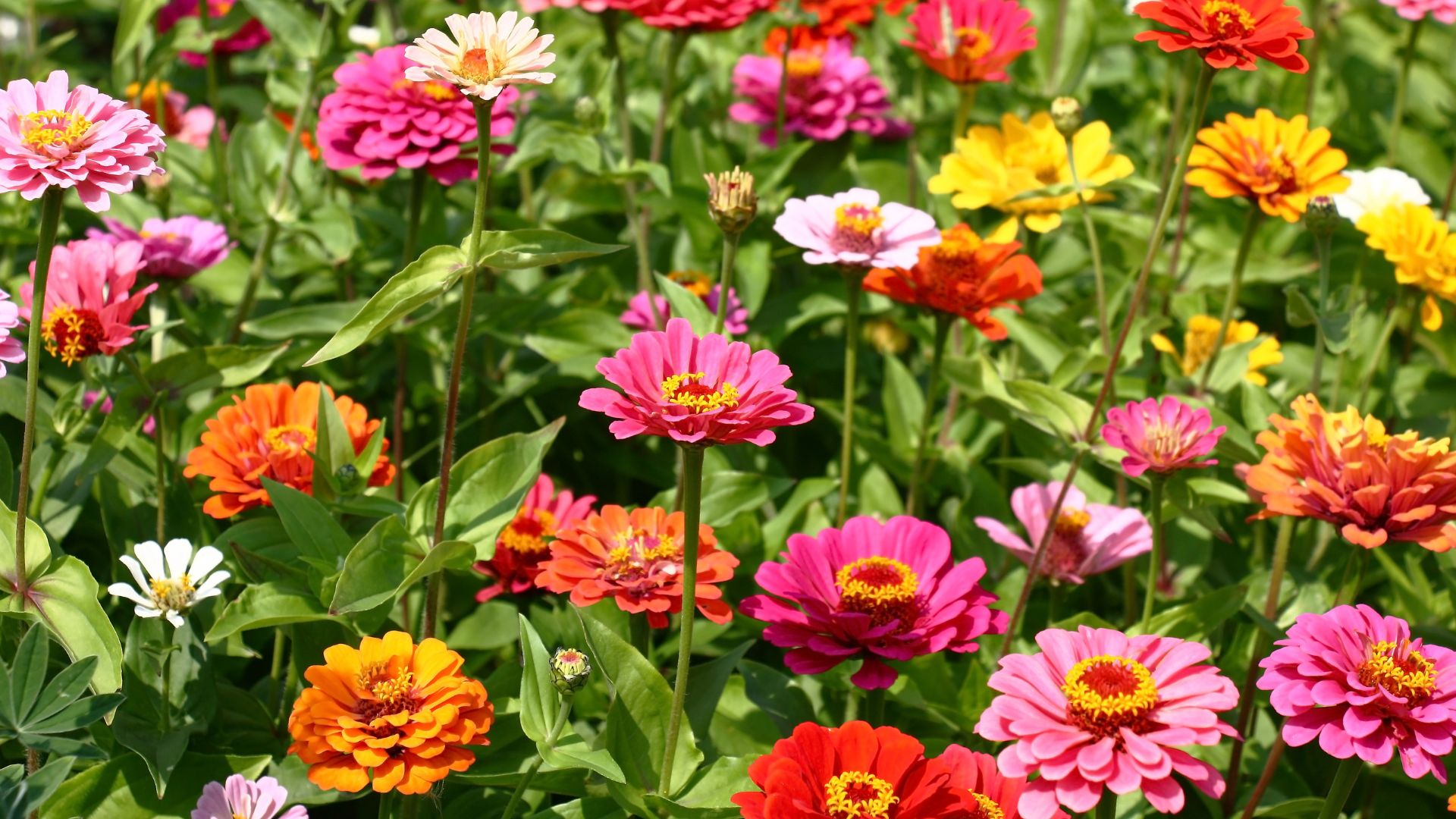
Zinnias are one flower that is often overlooked in a garden, but Dilmore says they are a “fast-growing, easy and low-maintenance” choice. And just like marigolds, they are loved by pollinators and are a perfect companion plant for fruits and vegetables.
The Chicago Botanic Garden also agrees and says they are a smart flower to grow as they are heat and drought-tolerant. What’s more, as a fast grower, Zinnias shade out weeds, cutting down on gardening chores.
One of the many attractions of zinnias is that they are available in a wide choice of colors, from bright reds, oranges, and yellows to softer pinks, lavenders, and creams. So, whatever your color preference, there’s a zinnia for you.
An advantage of zinnias is their long growing season, as they start blooming in early summer and will continue until the first frost. You can also encourage growth by using one of the best pairs of pruning shears to deadhead spent blooms.
Apart from brightening up your yard, zinnias are popular cutting flowers as they have sturdy stems, so they will look great displayed in a vase indoors.
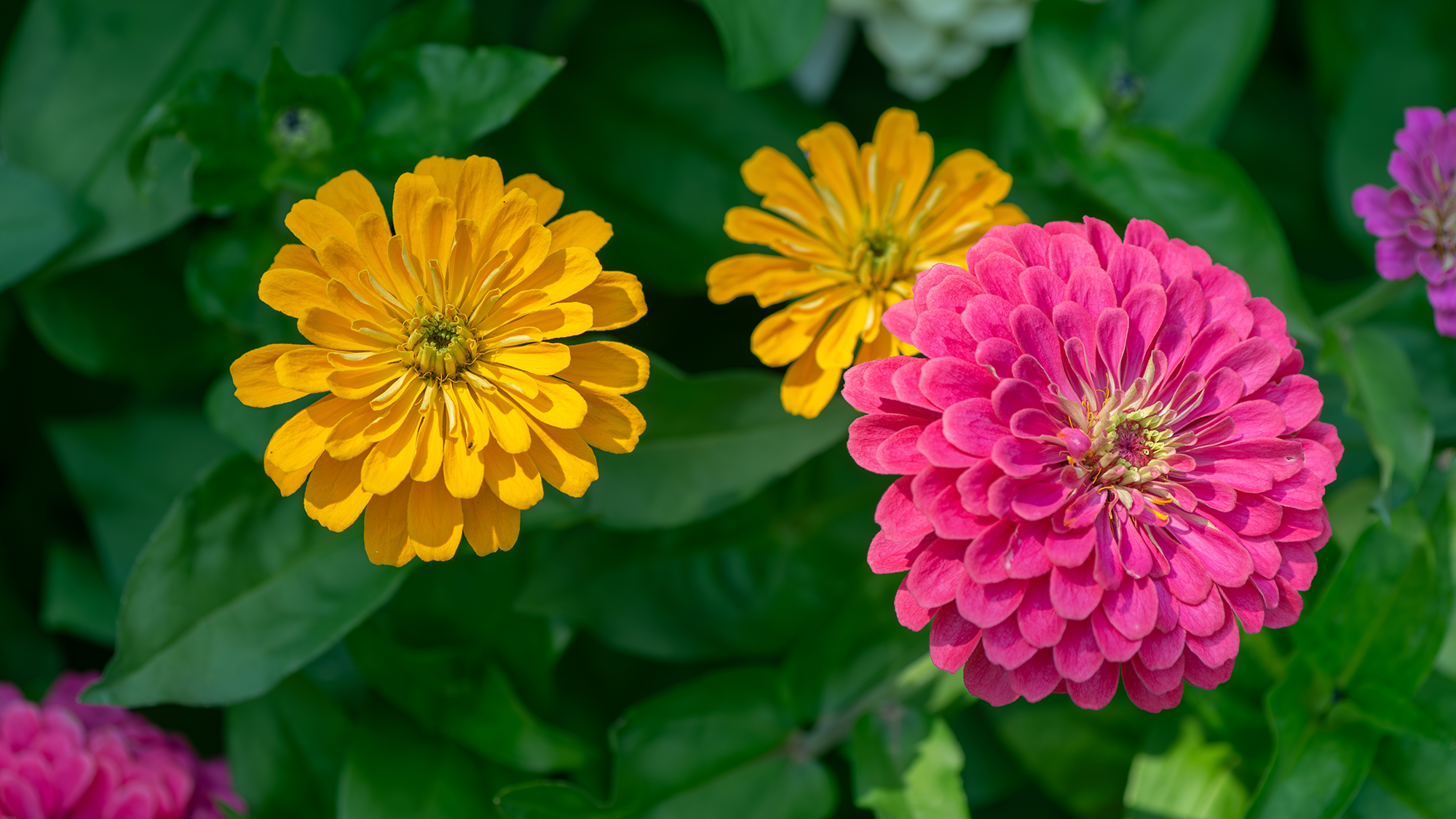
Planting
The benefit of zinnias is that they can be planted in zones 2-11, allowing them to be enjoyed across a wide landscape. They are a true gardener’s friend and can be grown easily from seed, if you choose, or planted directly into the ground.
Whether you go down the seed or plant route, zinnias thrive in full sun and will benefit from an area with good air circulation. Dilmore warns they can be prone to powdery mildew, which he says can become “an unsightly issue towards the end of the growing season.”
Zinnias have either single, double or semi-double flower heads, and can be identified by the number of rows of petals and whether the center of the flower is visible or not.
Mike Murphy, owner of You Had Me At Gardening, says, “Zinnias don’t like overly rich soil, which can lead to leggy growth, but a light feeding with a balanced fertlizer when planting can help establish strong roots.”
Once planted, he recommends keeping the soil moist until the plant is established and watering the plants when the top inch of soil feels dry. A popular choice is Zinnia elegans, also known as Common zinnia, and according to Murphy, they pair well with cosmos, salivas, and sunflowers.
3. Cosmos
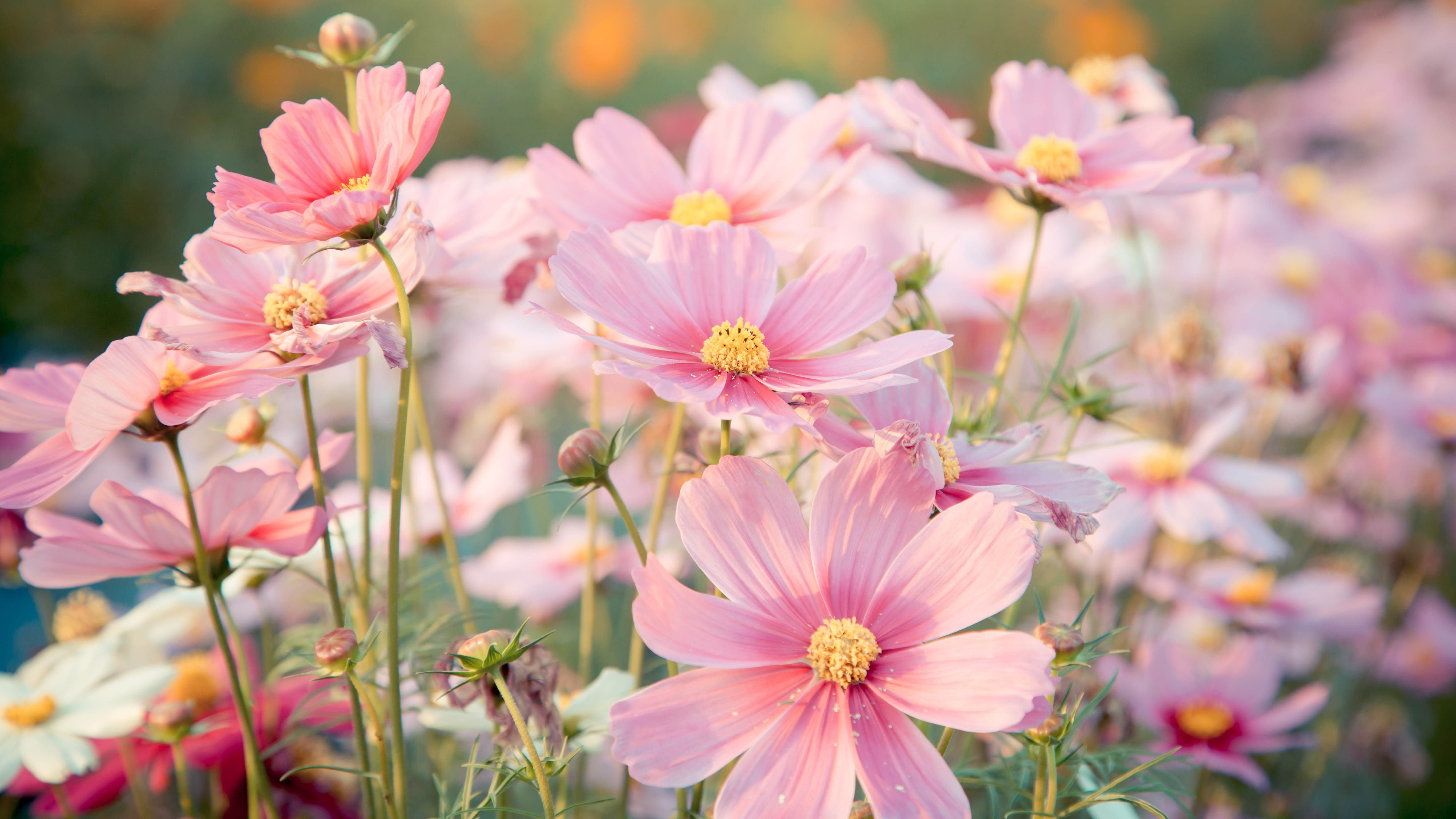
After the bright hues of marigolds and zinnias, cosmos will bring a softer, more romantic tone to your yard, with Murphy recommending this flower for its “feathery foliage and delicate flowers in white, pink and deep magenta.”
You can enjoy the daisy-like blooms from mid-summer to fall, with Murphy adding that they are excellent for filling in borders or cottage gardens.
Planting tips:
Murphy recommends sowing cosmos seeds directly into well-drained soil after the last frost. Before this time they would need to be sown indoors. They germinate well, so only need a light covering of soil, but Murphy advices they will need thinning out to prevent overcrowding.
If you are planting seedlings, place short varieties 10-12 inches apart, or taller types 1-2 feet apart. But whether you are growing from seed or plants, cosmos is a low-maintenance flower and a good choice for novice gardeners.
“Cosmos thrives in poorer soils and full sun, and they don’t need much feeding; in fact, too much fertilizer actually reduces flowering,” says Murphy.
Plus, cosmos is also drought-tolerant, so once established, you only need to water sparingly.
Cosmos does well in zones 2-11 and looks a treat when planted with marigolds, zinnias, and bachelor’s buttons.
4. Common peony
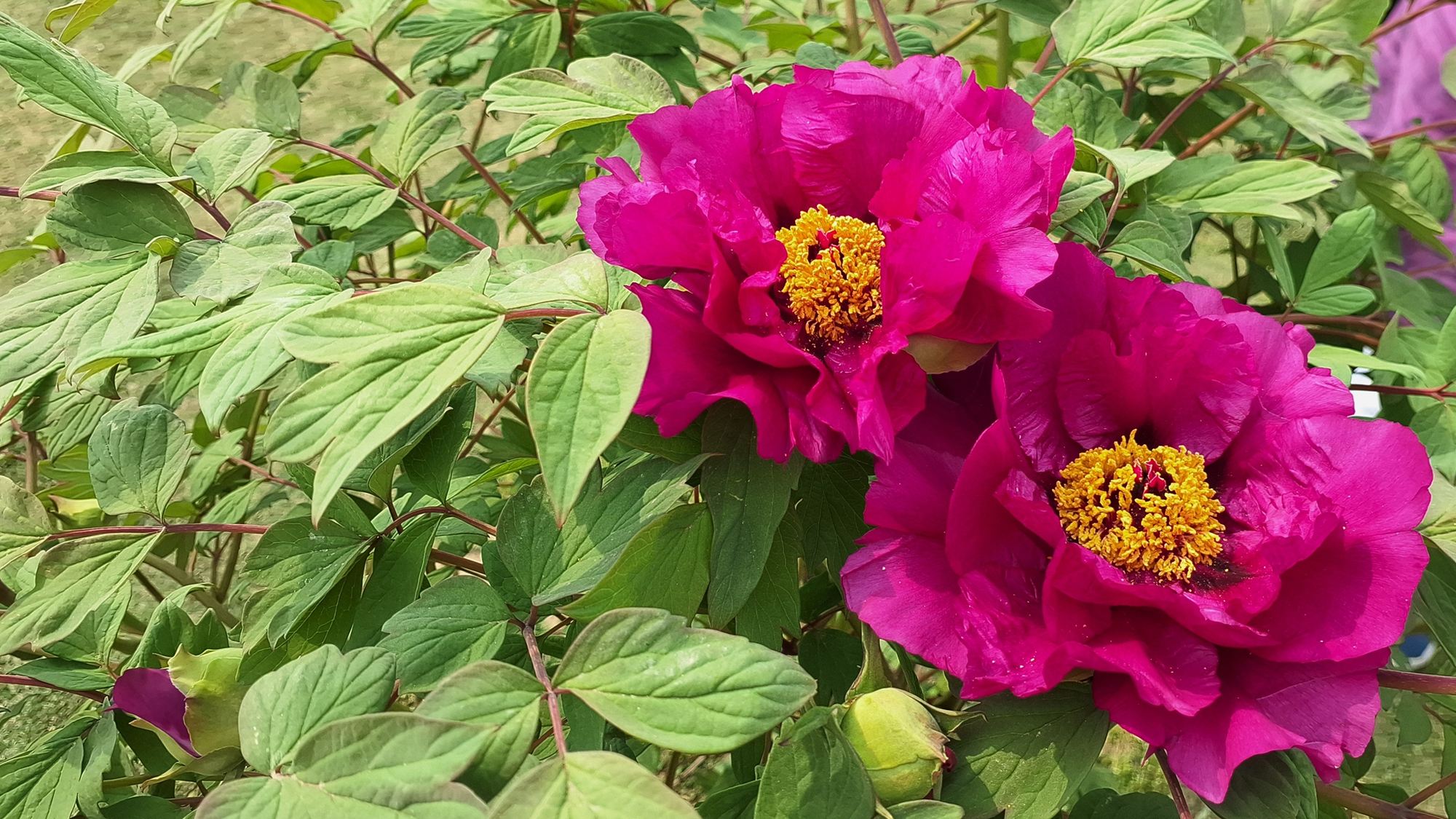
If you’re looking for a flower with volume and foliage, Anatasia Borisevich, plant expert at Plantum, recommends the common peony. It’s an easy-to-grow herbaceous perennial that will grow 24 inches tall and 28 inches wide.
Its bowl-shaped blooms form large deep pink or red flowers in late spring and early summer, which Borisevich describes as showy with an overwhelming sweet fragrance,” adding, “Peonies are perfect for butterfly gardens, but you can also work them into the landscape as a hedge.”
Planting
When planting, Borisevich says peonies favor a well-draining soil with a slightly acidic pH between 6.5 and 7.0, and they are suitable to plant in zones 3-8. However, she suggests amending the soil with compost or working in a mix for azaleas and rhododendrons if you have a clay soil.
Unlike the drought-tolerant cosmos, peonies are thirsty plants. “They need regular watering to thrive,” she says, adding, “Each week, the plant should receive 1–2 inches of water.”
Peonies are perfect for butterfly gardens, but you can also work them into the landscape as a hedge.
You’ll also need to keep an eye on your plant when rainfall is sparse and will need to be kept well-watered. But while it doesn’t like a drought, it loves the sun.
“To produce its stunning flowers, the common peony needs abundant sunlight — at least 6 hours per day, but the more, the better. Planting the flower in a spot that receives full sun is the best option,” says Borisevich.
However, it won’t produce as many flowers if the humidity rises above 60%, with Dorisevich advising it will do just fine at 40-60%.
And despite its flamboyant appearance, she says the common peony is a light feeder, “It does well with just an annual application of compost mixed with a bit of all-purpose fertilizer around the base of the plant,“ which can be done once it has finished blooming.
5. Gladioli
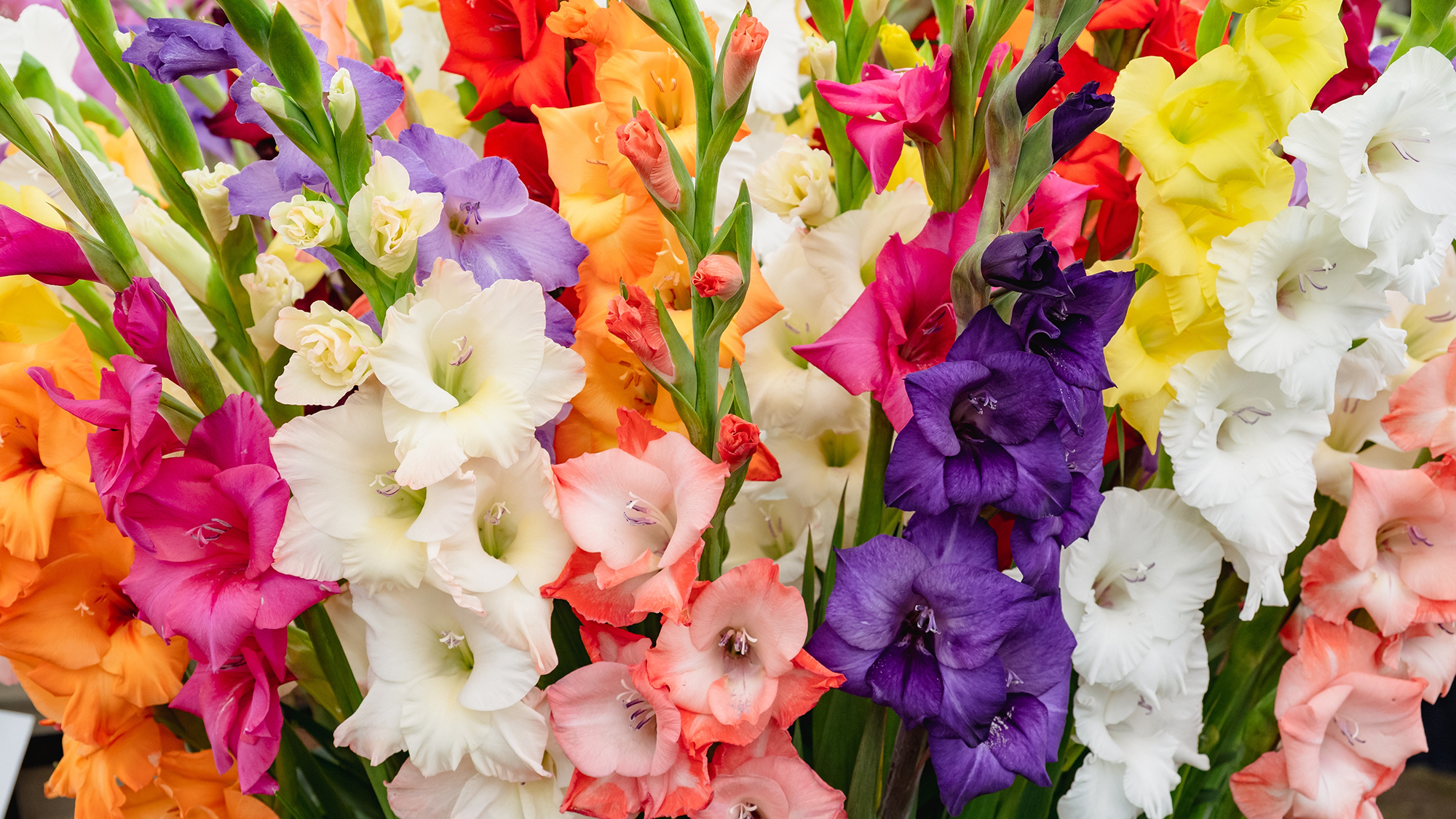
There’s nothing shy about gladiolus. Borisevich describes this theatrical flower as a “tall eye-catching beauty that will enchant you with its bright, trumpet-like blooms arranged on a sword-like stem.”
Gilmore adds, “Gladiolous are a mid/late summer blooming plant, which is a great addition to most gardens as at that time of the year it is difficult to find many flowers blooming in the garden.”
There are also plenty of colors, from bright reds and oranges to subtle pinks and bi-color and tri-color blooms.
Gladiolus looks best when the bulbs are planted en masse, rather than as single specimens.
Planting tips
Dilmore recommends planting gladiousi bulbs in late spring, after the last frost, in nutrient-rich soil in full sun. Once planted, Borisevich advises to water the bulbs thoroughly, and then to leave them alone until the first sprouts show up. Once they are established, they can then be watered once a week.
To encourage better growth of the flower spikes, Borisevich says, “Feed your glads after the first leaves emerge. Liquid fertilizer is the best option, as it is instantly absorbed by the plant.”
Standard Gladiolus bulbs will do well in zones 8-9 and can be left in the ground over winter; in zones 3-7, they will need to be dug up to store over winter.
More from Tom's Guide
- Discover the best solar lights
- And buying a robot lawnmower? 5 things to consider before you get one
- Plus, how to choose the right shears for the job — advice from garden experts

Camilla is the Homes Staff Writer and covers everything to do with homes and gardens. She has a wealth of editorial experience, mounting over 30 years, and covers news and features, tests products for reviews and compiles buying guides.
Her work has appeared in business and consumer titles, including Ideal Home, Real Homes, House Beautiful, Homebuilding & Renovation, and Kitchen & Bathroom Business. She’s even appeared on the cover of Your Home, writing about her own house renovation.
Although she’s obsessed with decorating her home, she also enjoys baking and trying out the latest kitchen appliances. But when she’s not inside, you’ll find her pottering about in her yard, tending to her vegetable patch or taking in her prized hydrangeas.
You must confirm your public display name before commenting
Please logout and then login again, you will then be prompted to enter your display name.

